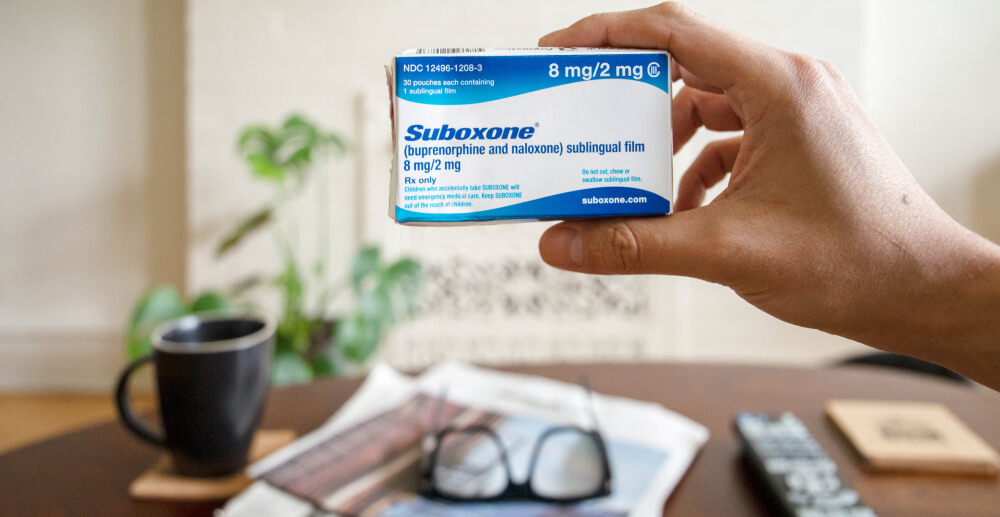Many people still face barriers to receiving Suboxone treatment, despite it being the recommended treatment for opioid addiction.
Here are several of the challenges people encounter when seeking Suboxone (buprenorphine/naloxone) treatment for opioid use disorder, and simple strategies to help you overcome them so you can get the evidence-based treatment you deserve.
Barrier 1: No doctors near you prescribe Suboxone, or the doctors are not taking new patients.
Strategy: Be vocal and active in your search.
Does it suck that you have to speak up about lack of treatment options? Especially when you’re already suffering from a stigmatized disease? Absolutely. But here’s the thing—no one, NO ONE, can advocate for your health better than you can. Visit TreatmentMatch.org or FindTreatment.gov to see if those directories can help you locate a local provider. Contact medical organizations like the American Medical Association and the American Society of Addiction Medicine and tell them about your experience in your area. Talk to your primary care doctor about their willingness to prescribe Suboxone. As of 2023, your doctor no longer needs a special waiver to prescribe it. While there is still misinformation and stigma even among the medical community, more and more providers are learning about the efficacy of medication-assisted treatment and becoming willing to prescribe it.
Advocacy is uncomfortable at first, especially if you’ve been hiding your addiction from everyone. But advocacy can become an important part of your recovery. You aren’t the only one in your area struggling, so your advocacy can contribute to a solution for more than just you. At Workit Health, we’ve learned that no one is going to build the world we want to live in, except for us. When Robin and Lisa, our two co-founders, saw a gap in addiction treatment, they built a new addiction treatment company. Now we’re treating people who wouldn’t receive care otherwise.
Strategy: Turn to telehealth.
Especially in more rural areas, telehealth treatment in which you see your provider via online videoconference is an excellent option when you lack local treatment providers. Workit Health providers offer 100% online treatment that includes medication (as appropriate), recovery groups, and more. While we were unique when we began offering this option, more telehealth companies have launched, so check to see which ones serve your state.
Barrier 2: Pharmacies don’t carry buprenorphine (Suboxone or another brand).
Strategy: Become known at a local pharmacy.
You’ve found a doctor and gotten a prescription. But now local pharmacies all say they don’t carry or dispense buprenorphine.
The simplest strategy is to head into your local pharmacy, introduce yourself, and tell the pharmacist that you’ll be needing this medication. Ask if they can begin carrying it for you. They’ll tell you if this works for them or not. If they’re able to carry it for you, sing their praises! Others in your area are probably struggling to find pharmacies that carry buprenorphine, too. Share in Facebook groups and on message boards. You’ve found a cooperative pharmacy, so let it be known.
Barrier 3: Your 12-step group is telling you that you aren’t doing recovery right.
Strategy: Change the group by staying, or get out of there.
The good things about 12-step groups? They’re donation-based, so they are free or very inexpensive. In many places, there are many meetings and fellowships to choose from. The bad thing? In some circles, stigma against medication is still strong.
Your choice of action here depends on your situation. If you love your group and aren’t bothered by the heckling, don’t make your medication a big deal. You’re not required to be loud about incorporating medication into your recovery. Do be a voice of reason for new folks who come in on medication. In this way, you can quietly begin to change the group’s culture.
Your own sanity, health, happiness, and sobriety need to be prioritized ahead of trying to change the culture of 12-step groups, however. So if the lack of acceptance bothers you, it’s time to find a new group. If there isn’t a large selection of groups in your area, consider starting your own that is more in line with your values. If you’re not feeling accepted, chances are that others in your area are also feeling ostracized. There’s a group called Medication-Assisted Recovery Anonymous that has some online and in-person meetings. Workit Health also offers online recovery group meetings for our members that are not based on the 12 steps.
Barrier 4: Your family is concerned that you haven’t quit entirely.
Strategy: Education, and communication.
Education, while perhaps not effective with for a 12-step crew already set in its beliefs, can be a key factor when seeking your family’s support for medication-assisted treatment. Evidence shows that those using medication to recover from opioid use disorder have better chances of success. That’s why it is promoted by so many medical and governmental organizations as the preferred treatment for opioid use disorder.
Don’t have the patience to explain all this to the fam yourself? Consider downloading some stats from the internet, and leave them strategically where they can be read with morning coffee. Or download Workit Health’s guide for families. Then, sit down for a conversation about your family’s concerns. Fear usually comes from a lack of understanding. Explain how medication works for you, and they should come on board.








